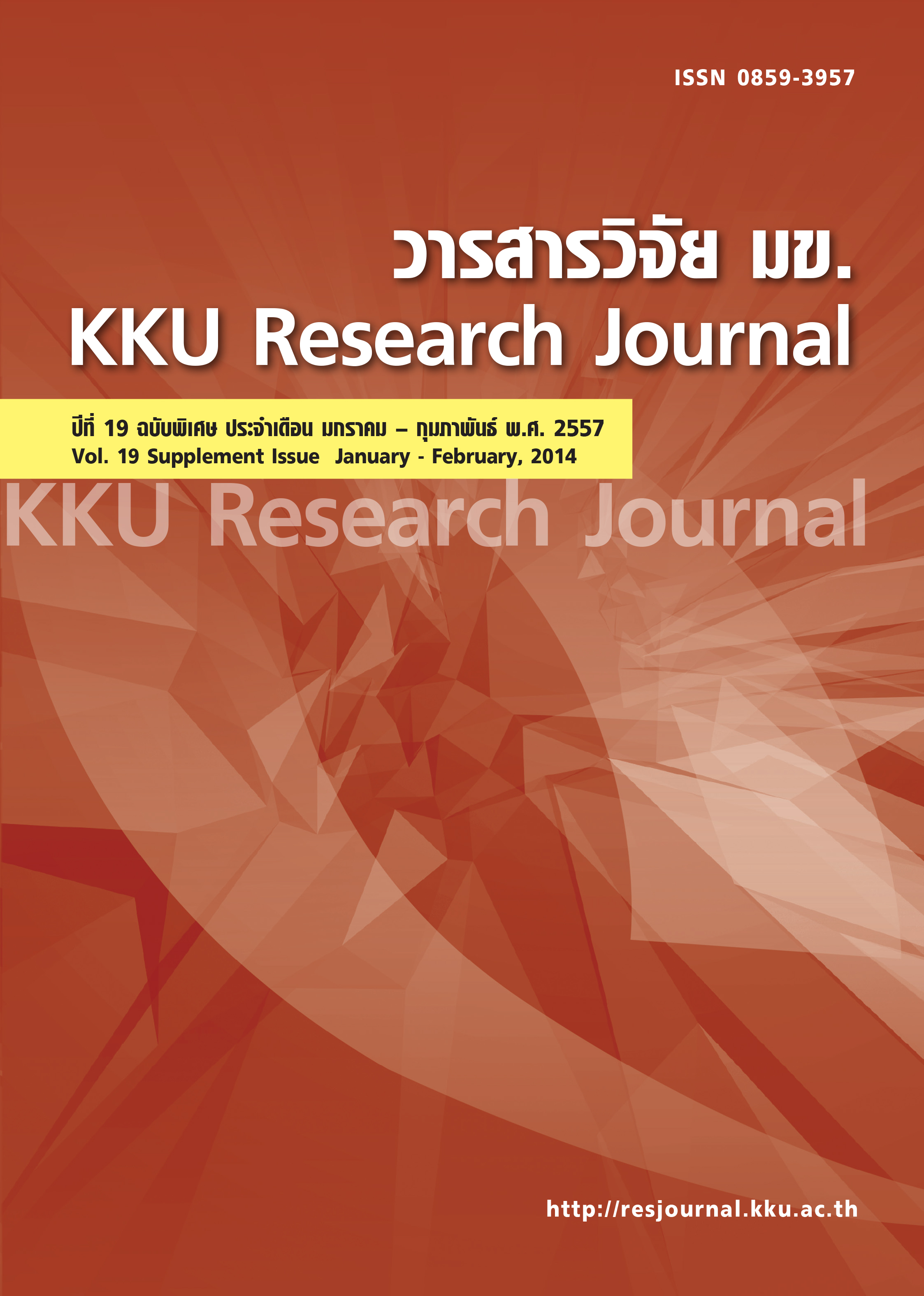Synthesis and anticoagulant activity of sulfated alginate
Main Article Content
Abstract
Alginate is a natural polysaccharide containing carboxyl groups and (1-4) linkage between ?-D-mannuronic acid and ?-L-guluronic acid. Applying of sulfated modification for alginate could generate heparin-like structure containing sulfate, carboxyl group and uronic units. This research aimed to apply chemical modification using reaction between sodium alginate and sulfurochloridic acid (ClSO 3 H) in formamide to generate product possessing anticoagulant activity which was evaluated by activated partial thrombosis time (APTT) and prothrombin time (PT). The success of sulfation was determined by sulfate content measurement and verified by FTIR spectra. The alginate sulfates (AlgS) and alginate sulfate fragments (AlgHS) obtained containing sulfate content of 14.9 and 12.9 % with degree of sulfation (DS) of 1.75 and 1.35, respectively. The existence of sulfate groups was confirmed by two strong peaks at 797 and 1244 cm -1. The AlgS and AlgHS yielded APTT at approximately 287 and 102 seconds, respectively, at 75 g ml-1 but showed no increase of PT compared to the control assay. Sulfated alginate could be used for potential application such as anticoagulant.
Article Details
References
[2] Alban S, Franz G, Characterization of the anticoagulant actions of semisynthetic curdlan sulfate. Thromb Res. 2000;99:377-388.
[3] Li X, Xu A, Xie H, Yu W, Xie W, Ma X. Preparation of low molecular weight alginate by hydrogen peroxide depolymerization for tissue engineering. Carbohyd Polym. 2010;79:660-664.
[4] Fan L, Jiang L, Xu Y, Shen Y, Xie W, Long Z, et al. Synthesis and anticoagulation activity of sodium alginate sulfates. Carbohyd Polym. 2011;83:17971803.
[5] Zhang H, Mau W, Fang F, Li H, Sun H, Chen Y, et al. Chemical characteristics and anticoagulant activities of a sulfated polysaccharide and its fragments from Monostroma latissimum. Carbohyd Polym. 2008;71:428-434.
[6] Ronghua H, Yumin D, Jianhong Y, Preparation and in vitro anticoagulant activities of alginate sulfate and its quaterized derivatives. Carbohyd Polym. 2003;52:19-24.
[7] Pulsawat W, Thongmalee S. Chemical depolymeri zation and sulfation of sodium alginate for anticoagulant and antibacterial activities. Proceeding of the 24th Annual Meeting of the Thai Society for Biotechnology “Renewable Energy and Global Care”; 2012 Nov 29-30; Ubon Ratchathani, Thailand; 2012. P. 127-132.
[8] Chandia NP, Matsuhiro B, Vasques AE. Alginic acids in Lessnia trabeculata: characterization by formic acid hydrolysis and FT-IR spectroscopy. Carbohyd Polym. 2001;46:81-87.
[9] Dodgson KS, Price RG. A note on the determination of the ester sulphate content of sulphated polysaccharides. Biochem J.1962;84(1):106-110
[10] Pulsawat W, Khanitchaidecha P. Screening and Environmental Factors Effecting on Growth of Heparinase-Producing Bacteria. KKU Res J. 2012; 17(4):593-606.
[11] Arlov Ø. Heparin analogs created by sulfation of alginates using a chemoenzymatic strategy: Norwegian University of Science and Technology; 2012.


